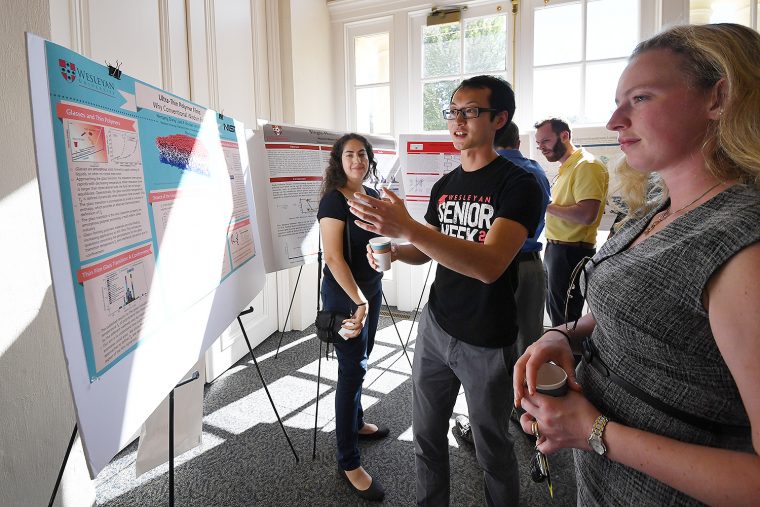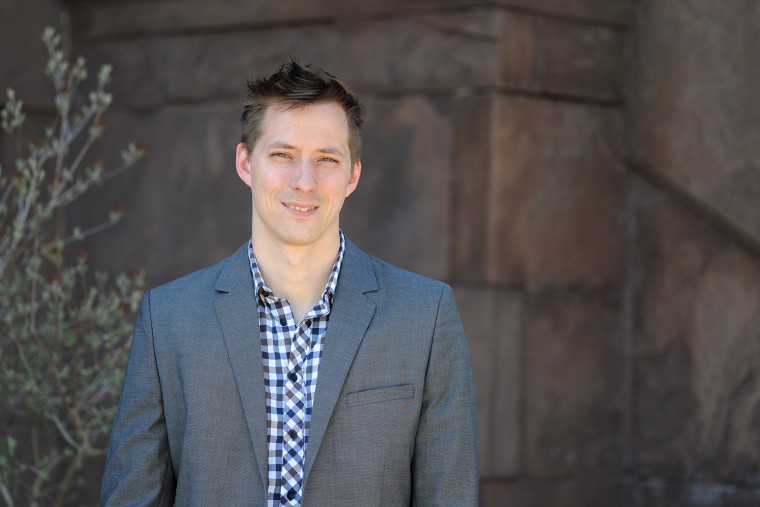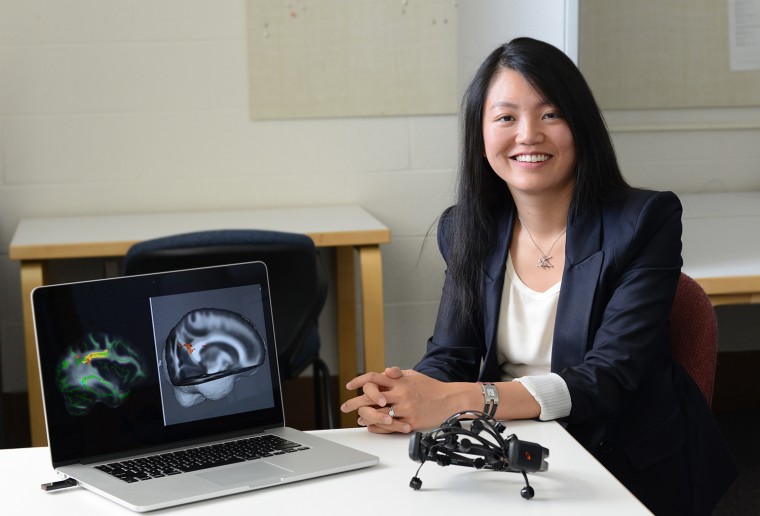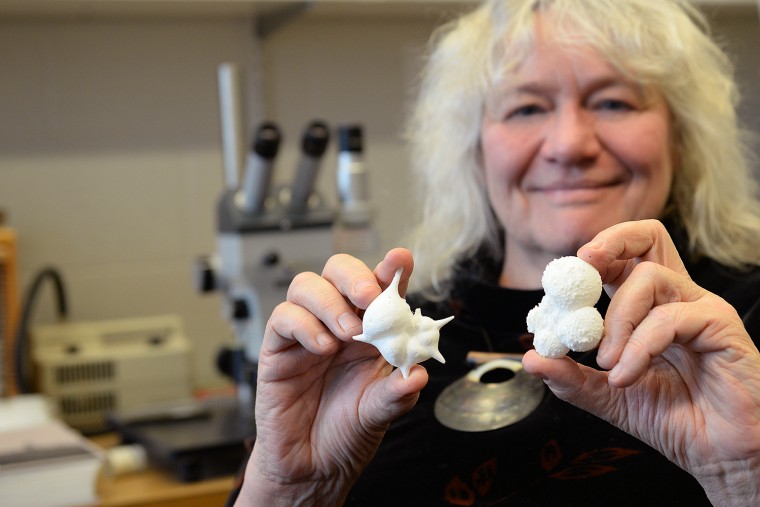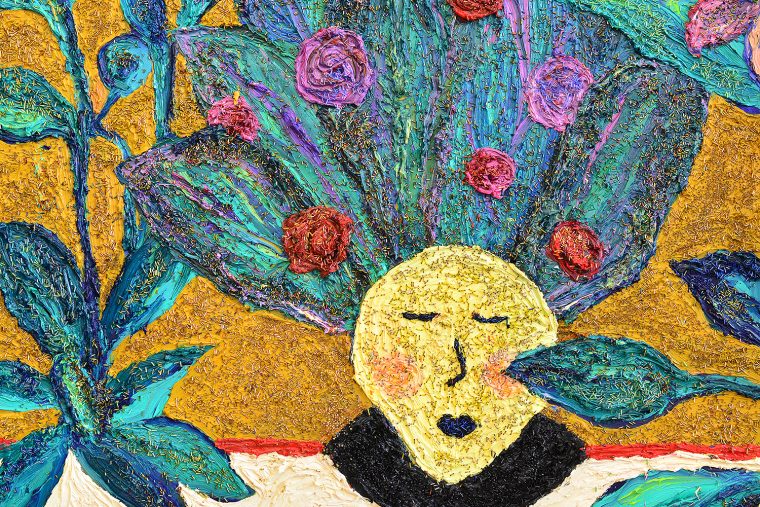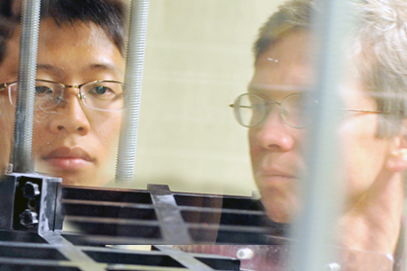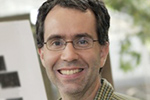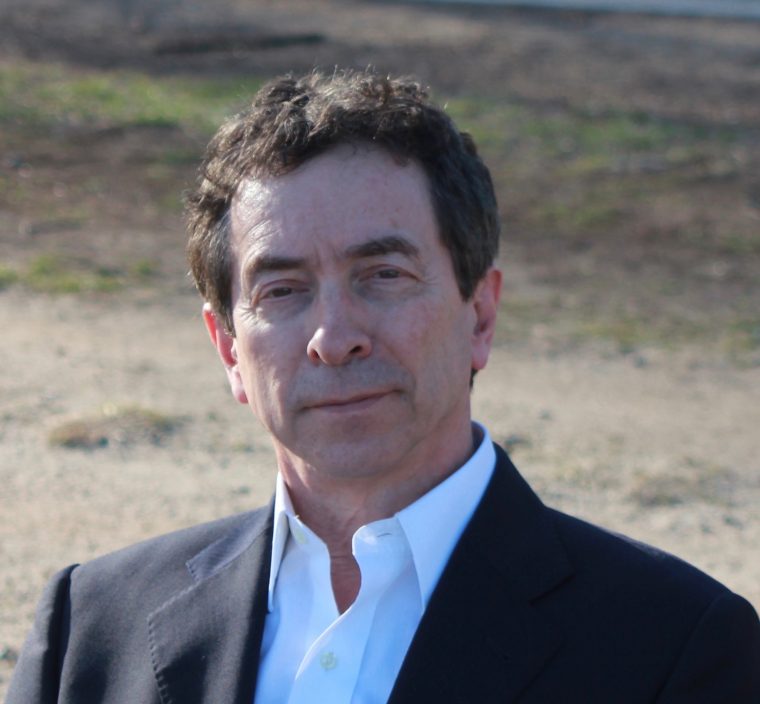Wesleyan's Molecular Biophysics Program hosted its 18th annual retreat Sept. 28 at Wadsworth Mansion in Middletown. Wesleyan affiliated speakers included: Colin Smith, assistant professor of chemistry, on "An Atomistic View of Protein Dynamics and Allostery;" Meng-Ju Renee Sher, assistant professor of physics, on "Tracking Electron Motions Using Terahertz Spectroscopy;" Kelly Knee, PhD '07, principle scientist for Pfizer's Rare Disease Research Unit, on "Protein Folding Chaperones: Molecular Machines for Tricky Problems;" and Francis Starr, professor of physics, director of the College of Integrative Sciences, on "DNA Four-Way Junction Dynamics and Thermodynamics: Lessons from Combining Simulations and Experiments." Arthur Palmer, the Robert…
Writing in The Conversation, Assistant Professor of Psychology Mike Robinson looks to the brain to explain the real reason that some people become addicted to drugs. Robinson, who also is assistant professor of neuroscience and behavior, assistant professor of integrative sciences, begins by debunking two popular explanations for drug addiction: that compulsive drug use is simply a "bad habit," and that overcoming the unpleasant withdrawal symptoms is too hard for some addicts. While pleasure, habits and withdrawal can play a role in drug use, Robinson says, the true reason for addiction can be explained by the psychological differences between "wanting" and "liking." (more…)
Psyche Loui, assistant professor of psychology, assistant professor of neuroscience and behavior, assistant professor of integrative sciences, is the author of a new publication on musical anhedonia—the lack of pleasure from music. Together with others in her lab, Loui studied an individual with musical anhedonia and compared his brain against a group of controls. They found that his auditory cortex was differently connected to his reward system, a finding which gives further support for the role of brain connectivity in the musical experience. The article, titled, "White Matter Correlates of Musical Anhedonia: Implications for Evolution of Music," was published Sept.…
Nicholas "Nicky" Antonellis '17, a BA/MA student in physics, is one of 14 students in the U.S. selected to receive a $10,000 scholarship from the Directed Energy Professional Society (DEPS). Candidates for the award must be full-time graduate students who are interested in pursuing or are currently studying the directed energy technology areas of high-energy lasers or high-power microwaves. Antonellis is interested in using his knowledge in photonic device design and computational simulations in order to eventually improve upon medical technologies. (more…)
The availability of sufficient dissolved oxygen in seawater is critical for marine life, and places where oxygen falls below a critical concentration — or "dead zones" — are often associated with mass die-offs of fish, shrimp and other creatures. With future global warming, the oceans are on course to see progressively less dissolved oxygen available. Scientists currently use often not well-tested computer models to predict the expansion of dead zones, but a team of researchers from Wesleyan, University California Riverside and Syracuse University are hoping to use oceanic sediment samples to better predict where die-offs may occur next. Their study,…
(more…)
Amid rising student interest, Wesleyan has announced a new interdisciplinary minor in Integrated Design, Engineering, and Applied Sciences (IDEAS), beginning in 2017-18. It will be hosted within the College of Integrative Sciences (CIS). The IDEAS minor will introduce foundational skills in engineering and design, and bring together existing arts, design, and applied science courses to create a more formal structure to guide students interested in these fields. According to Professor of Physics Francis Starr, a co-proposer of the minor and director of the CIS, “The new minor plays into Wesleyan’s unique capabilities and dovetails with Wesleyan’s commitment to prepare students…
New climate research by Dana Royer, professor and chair of earth and environmental sciences, finds that current carbon dioxide levels are unprecedented in human history and, if they continue on this trajectory "the atmosphere could reach a state unseen in 50 million years" by mid-century, according to an article in Salon. The carbon dioxide levels in the atmosphere today are ones that likely haven’t been reached in 3 million years. But if human activities keep committing carbon dioxide to the atmosphere at current rates, scientists will have to look a lot deeper into the past for a similar period. The…
Chris Weaver MALS ’75, CAS ’76, visiting professor in the College of Integrative Sciences at Wesleyan, was appointed co-director of the Video Game Pioneers Archive at the Smithsonian Institute’s Lemelson Center for the Study of Invention and Innovation. This one-of-a-kind initiative will record oral-history interviews with first-generation inventors of the video game industry, creating a multimedia archive that will preserve the evolution of the industry in the words of its founders. The archive will offer scholars and the public the opportunity to better understand the personalities, technologies, and social forces that have driven interactive media to become one of the…
Ellen Thomas, professor of earth and environmental sciences and University Professor in the College of Integrative Sciences, recently co-authored five papers in academic journals. Her first paper, “Jianshuiite in Oceanic Manganese Nodules” co-authored with Jeffery Post and Peter Heaney, appeared within American Mineralogist. Deviating from her usual research, Thomas focused on mineralogy and, in particular, the crystal structure of a rare mineral found in sediments during an ancient counterpart of future global warming. Thomas co-authored “Variability in Climate and Productivity during the Paleocene-Eocene Thermal Maximum in the Western Tethys,” with Flavia Boscolo-Galazzo and Luca Giusberti, both of the University of Padova.…
Lisa Dierker, professor of psychology, director of pilot programs for the Center for Pedagogical Innovation, and Ishita Mukerji, the Fisk Professor of Natural Science, professor of molecular biology and biochemistry, professor of integrative sciences, were both honored at the 12th annual Women of Innovation Awards. Presented by the Connecticut Technology Council, the awards celebrate the energy, creativity and success of women and students from Connecticut's science and technology community. Both professors were honored in the category of Academic Innovation and Leadership. The celebration was held April 6 in Plantsville, Conn. Dierker was honored for her work developing a curriculum to introduce students to…
Assistant Professor of Psychology Psyche Loui has long been interested in studying the intersection of music and emotions. In her latest study, published March 10 in Social, Cognitive, and Affective Neuroscience, she identified specific connections in the brain between the auditory processing regions and regions for social and emotional processing. The article is titled, "Brain connectivity reflects human aesthetic responses to music." Loui, who also is assistant professor of neuroscience and behavior, assistant professor of integrative sciences, has previously studied how music can cause chills, or similar strong physiological reactions in people when listening to music. Together with former thesis student…


